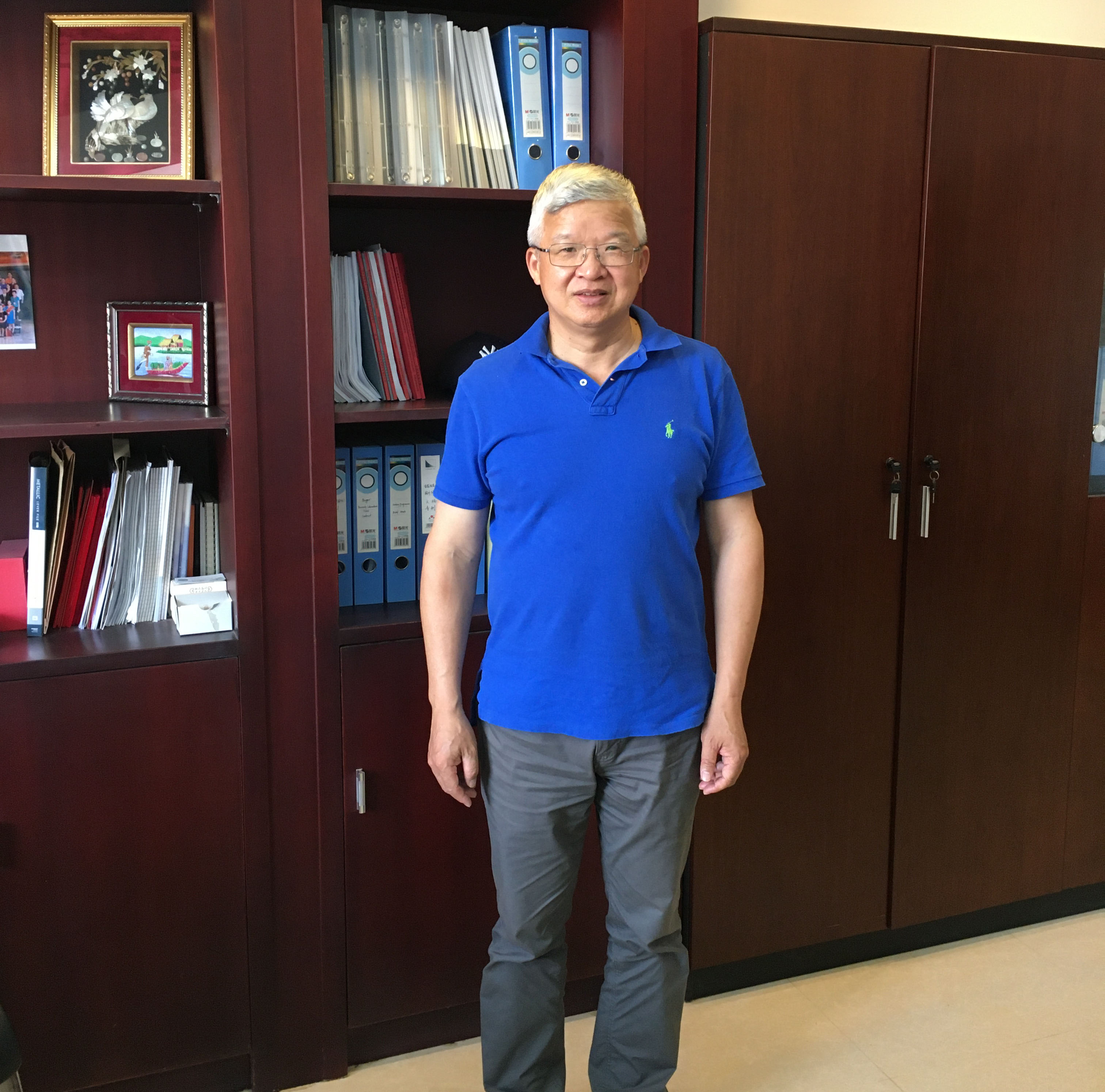Invited Speakers
Prof. Sijun Zheng
Yunnan Academy of Agricultural Sciences, Alliance of Bioversity and CIAT, ChinaSpeech Title: The spread of Fusarium wilt of banana TR4 and its comprehensive management
Abstract: Fusarium wilt of banana, caused by Fusarium oxysporum f. sp. cubense (Foc), especially Tropical Race 4 (TR4), seriously threatens banana production worldwide, especially in banana exporting countries. The best strategy to control TR4 is a multiple stakeholder approach which brings together governmental agents, NGOs, scientists and banana farmers to work on two aspects. One is the prevention and managing strategy: early warning system through diagnosis in areas where epidemics are occurring and (adjacent) areas where the pathogen is not yet found for surveillance, containment, eradication and exclusion of banana Fusarium wilt. In no infected areas, clean starting materials using tissue culture plants are highly recommended. In the nursery process fresh and TR4-free soil are absolutely needed in order to prevent to infect banana seedling before planting. For infected areas, containment measurements are also very useful for slowing down spreading of TR4. The second path is support of research, to development resistant cultivars by conventional somaclonal selection or molecular breeding, cultivar substitution, verifying the effect of cultivar mixtures/intercropping system, e.g., cover plant, crop rotation, ecological intensification, and screening and identifying beneficial microbiomes in suppressive soil. Comprehensive approaches combined with TR4 evaluation, utilization from local accessions and breeding new varieties adapting to local ecological conditions will be the future direction to combat TR4. Biological control of banana fusarium wilt receives increasing attentions for its sustainable production. We proposed a tritrophic biocontrol interaction relationship of bacteria-pathogens-bananas. The colonization of biocontrol bacteria in banana roots will be key factor for effective suppression of pathogens. Laser Scanning Confocal Microscopy and new developed molecular techniques could be used to monitor RFP-labelled bacteria exhibit chemotaxis towards green fluorescent protein (GFP)-labelled TR4 hyphae in banana plants. In conclude, we can provide a new theory for the interaction between the biocontrol bacteria, TR4 and banana plants, and provides new ideas for the biological prevention at early stage in nursey and control of banana wilt for sustainable production.
Assoc. Prof. Dr. Eng. Cristian Gheorghe Popescu
University of Pitesti, RomaniaSpeech Title: CONNECTION BETWEEN ENVIRONMENTAL AND AGRICULTURAL POLICIES PROMOTED BY EUROPEAN GREEN DEAL
Abstract: The European Green Deal is the most important vision and strategy of the vision of the European Union related to sustainability, green technologies and high environmental standards. Agriculture is one of the most important sectors of the European Union that interferes a lot with European policies, exceptionally environmental policies. According to Europe's new strategy, the most important strategies and policies connected with environmental and agricultural policies are:
—— EU Farm to Fork Strategy;
—— EU soil strategy for 2030;
—— EU Climate Law;
—— 2030 Climate Target Plan;
—— EU Biodiversity Strategy for 2030;
—— EU's Circular Economy Action Plan.
Keywords: sustainability, environmental policy, organic farming, agricultural policy, European Green Deal
Prof. Xusheng Shao
Shanghai Key Lab of Chemical Biology, School of Pharmacy, East China University of Science and Technology, Shanghai, ChinaSpeech Title: Photopharmacological ligands for Pesticides
Abstract: Photopharmacological ligands provide a powerful way for optical control of the activity of a molecule, which will facilitate better understanding of toxicological mechanism. By blending of photoswitch with pesticides, we prepared series of photochromic ligands acting on various receptors or enzymes, such as nAChR, GABAR, sodium channel, Ryanodine receptor. Some PCLs showed different activity before and after light irradiation. These PCLs were then used to optically control over the enzyme, neuron and insect behavioral responses.
Prof. Kimiko Itoh
Institute of Science and Technology, Niigata University, JapanSpeech Title: Metabolic engineering glycogen structure by OsGBSSI expression in Escherichia coli.
Abstract: Glycogen is a storage polysaccharide commonly found in bacteria and animals, consisting of a linear chain of α-1,4 glycosidic linkages of glucose with many branches due to α-1,6 glycosidic linkages. In recent years, glycogen has been studied not only as a nutritional source but also for its functional properties. Various changes in the structure of glycogen may enable the development of new uses of glycogen and novel application. Glycogen metabolism in Escherichia coli is mediated by GlgC (ADP-Glucose pyrophosphorylase), which synthesizes ADPG, a substrate of glycogen, from glucose-1-phosphate (G1P), GlgA (Glycogen Synthase, GS), GlgB (Glycogen Branching Enzyme), which transfers one glucan chain to the C6 position of another, GlgX (Glycogen Debranching Enzyme), which is responsible for hydrolysis of the α-1,6 glycosidic linkage, and α-1 4 glycosidic linkages at the non-reducing end, and GlgP (Glycogen Phosphorylase), which catalyzes the hydrolysis of α-1,4 glycosidic linkages at the non-reducing end. On the other hand, the rice GBSSI (Granule-Bound Starch Synthase I) is an enzyme that catalyzes α-1,4 glycosidic linkages using ADPG as a substrate, similar to GS, to synthesize linear chains of amylose and amylopectin of storage starch. In this study, the OsGBSSI was introduced into E. coli BW25113 and various mutant strains ΔglgA, ΔglgX, and ΔglgP to investigate changes in the structure of the glycogen and metabolic profile of the modified glycogen producing E. coli. Glycogen from BW25113 expressing GBSSI showed a slight reduction in mean particle size, while OsGBSSI expressing ΔglgP showed a significant increase in mean particle size. Anion exchange-pulsed amperometric high-performance chromatography (HPAEC-PAD) was used to analyze the chain length distribution of the constituent unit chains. The results showed that in BW25113+GBSSI, the Degree of Polymarization (DP) 3-4 unit chains decreased and the DP5-11 unit chains clearly increased compared to BW25113. This suggests that GBSSI may elongate DP3-4. These results indicated that the OsGBSSI can modified particle size of glycogen, and changes in distribution of unit chains in E. coli.
Prof. Julang Li
Department of Animal BioSciences, University of Guelph, CanadaSpeech Title: Improving the nutrient value of feedstuff using characterized novel microbial fermentation
Abstract: Improving the nutrient value of feedstuff using characterized novel microbial fermentation Julang Lia*, Nadeem Akhtara, Nanshan Qiab, Elijah G. Kiariea aDepartment of Animal Biosciences, University of Guelph, Guelph, Ontario, Canada. bInstitute of Animal Health, Guangdong Academy of Agricultural Sciences, Guangzhou, Guangdong, P.R. China Dietary protein is one of the most expensive nutrients in feed. The rising feed cost, and the increased human consumption of plant-based food which competes for protein with the animal together have posed challenges to high-quality protein supply for animal production. These call for using innovative feed processing technologies to improve feed nutrient value to sustain the livestock industry. We aimed to use a fermentation approach to improve the feed nutrient value. We have screened from different sources and identified bacterial strains that secrete cellulase, xylanase and proteinase as candidates for feedstuff fermentation. Further studies revealed that a few of them are capable of breakdown glycinin and beta-conglycinin, the major proteins in SBM that are difficult to digest and often result in intestinal upset in monogastric animals. Molecular characterization revealed that isolate 9 is a Bacillus subtilis strain (B. subtilis 9) that secreted high levels of cellulase, xylanase, and proteinase compared to the ATCC control strain and other isolates. It grew significantly faster than the control strain. In addition, it also survived a wide range of concentrations salts and pH. When used for SBM fermentation, protein profiling of fermented SBM revealed a significant reduction of high molecular weight proteins, especially those of glycinin and beta-conglycinin, to small peptides. On a dry matter basis, neutral detergent fibre (NDF) of the fermented SBM was decreased by 34%; crude protein content was increased from 49 to 57%. Pigs fed with a diet formulated with the fermented SBM as the sole source of crude protein had significantly higher apparent ileal digestibility (AID) of dry matter, ash, crude protein, NDF, and acid detergent fibre compared with the control pigs fed with unfermented soybean meal.
Prof. Md. Abdul Karim
Professor, Laboratory of Environmental Microbiology and Biotechnology, Department of Botany, University of Dhaka, Dhaka 1000, BangladeshSpeech Title: Investigation of multidrug resistant Enterococcus spp. from hospital wastes and aquatic habitats in Dhaka, Bangladesh
Abstract: The emergence of multidrug resistant bacteria is a global problem and major obstacle for the treatment of many infectious diseases. Indiscriminate, unnecessary, and unwise use of antibiotics boosts up this antibiotic resistance giving rise to multidrug-resistant (MDR) bacteria in the environment. The role of the hospital environment as a reservoir of multidrug-resistant Enterococcus spp. in Dhaka has been poorly investigated; however, it could be responsible for the transmission of multidrug-resistant bacteria.
Enterococci are indicators of the presence of fecal material in water and, therefore, of the possible presence of disease-causing bacteria, viruses, and protozoa. Enterococci are organisms with remarkable ability to adapt to the environment and acquire antibiotic resistance determinants. It is now a global concern as the innocent, easily treatable bacteria are slowly making changes resistant to antimicrobial agents because of careless, rapid, and widespread use. Freshwater environments are a well-recognized system for the dissemination and evolution of antibiotic resistance. Water bodies are sites of genetic exchange where environmental bacteria interact with microbes originated from humans and other animal sources, through horizontal gene transfer. Enterococci are indigenous flora of the gastro-intestinal tracts of animals and humans. Recently, interest in two major species, Enterococcus faecium and Enterococcus faecalis, has heightened because of their ability to cause serious infections and their intrinsic resistance to antimicrobials. So, the aim of the present study was performed to see the status of hospitals in Dhaka city and aquatic habitats as the global concern of rising antibiotic resistance Enterococcus spp. which has become a threat to humans.
Enterococci are ubiquitous. The origins of Enterococcus species vary from environmental to animal and human sources. Enterococcus faecalis and E. faecium are the predominant, gram positive cocci in human stools. Animals like poultry, cattle, and pig, E. faecium is the prevalent species, but other species occur like E. faecalis, E cecorum, E. gallinarum, and E. durans. Because of unusual use of antibiotics, these bacteria grow high level resistance among them against multiple drugs.
The present study aimed to enumerate, isolate, and characterize antibiotic resistant Enterococcus spp. from freshwater habitats. Fifty-one samples were collected from ten different hospitals and 90 samples were collected from nine different freshwater habitats in Dhaka city. The pH of the collected samples ranged 7.18 - 8.45. Enterococcus agar medium was used to enumerate, isolate, and characterize bacteria. In Enterococcus agar, the bacterial load ranged 1.10 × 101 - 3.71 × 102 cfu/g.
Out of initial 177 bacterial isolates, finally 21 isolates were selected for detail studies considering their growth pattern, morphological and physiological characteristics. All the selected isolates were facultative anaerobic, gram positive, cocci shaped and non-spore former. Enterococcus were phenotypically identified considering their colonial morphology and physiological and biochemical characteristics. Out of eleven isolates nine were E. faecium and two were E. faecalis.
The antimicrobial resistant pattern of the selected isolates to eight antibiotics were determined using disk diffusion method. E. faecium (60.52%) were more resistant to most of the antibiotics than E. faecalis (56.25%). All the isolates were shown to be resistant to antibiotics viz; Erythromycin, Tetracycline, Amoxycillin, Penicillin, Gentamycin, Chloramphenicol, Ciprofloxacin and Vancomycin. Enterococcus faecalis showed resistance to all 8 antibiotics tested as Erythromycin (78.57%), Tetracycline (21.43%), Amoxycillin (50%), Penicillin (57.14%), Gentamycin (28.57%), Chloramphenicol (92.86%), Ciprofloxacin (71.43%) and Vancomycin (42.86%). Furthermore, Enterococcus faecium exhibited resistance to Erythromycin (98.41%), Tetracycline (41.27%), Amoxycillin (36.51%), Penicillin (73.02%), Gentamycin (20.63%), Chloramphenicol (84.13%), Ciprofloxacin (82.54%) and Vancomycin (47.62%).
Remarkable multiple antibiotic resistances to the classes of antibiotic tested were observed between two species. An active sustainable program should be carefully developed to prevent the emergence of these multidrug resistant bacteria. If antimicrobial resistance continues to increase from current levels, it is estimated that by 2050 ten million people would die every year due to lack of available treatment and the world’s GDP would be reduced to 2-3.5%. More study needs to be formulated to find out the mechanism of multidrug resistant activities with possible preventive measures.
Dr. Zichen Huang
Researcher, JSPS International Research FellowLaboratory of Bio-Sensing Engineering
Graduate School of Agriculture, Kyoto University
Speech Title: Fluorescence imagings for non-destructive inspecting strawberry (Fragaria × ananassa) in postharvest stage
Abstract: As one of the most popular fruits in the world, the strawberry (Fragaria × ananassa) is a fruit with a sweet and distinctive flavour, but with a soft texture that spoils quickly. A low-cost method is needed to distinguish perishable strawberries from normal fruit in a non-destructive way, as well as the deterioration of strawberries during storage. In this study, a machine vision system is presented for inspecting the quality of strawberries using ultraviolet (UV) light. Related experiments in postharvest stage validated the effectiveness of the proposed method. The results show that UV fluorescence imaging can be used as a fast, non-destructive and low-cost method to classify perishable and normal strawberries at an early stage, as well as to detect the deterioration of strawberries during storage. These findings suggest that strawberries are prone to rapid postharvest deterioration and can be sorted using UV-fluorescence imaging, which is a realtime, non-destructive, and low-cost sensing method. Meanwhile, the proposed method can be used for non-destructively estimate the deterioration level of a strawberry.
Keywords: Strawberry, fluorescence imaging, non-destructive, postharvest







